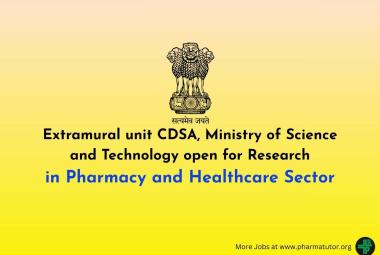{ DOWNLOAD AS PDF }
ABOUT AUTHORS:
DK Vir1*, Nandu Kayande1, Pankaj Kushwah2
1Department of Pharmacology
2Department of Pharmacognosy
Nimar Institute of Pharmacy, Dhamnod,
Dhar, Madhya Pradesh, India
*dkvir007@gmail.com
ABSTRACT
The study was aimed to evaluate the antacid properties of Curcuma Longa Linn rhizomes aqueous extract under simulated conditions. Fresh rhizome of Curcuma Longa Linn was homogenized and dried under shade and thus mass obtained was powdered, weighed and subjected for the evaluation of antacid profile of the drug antacid properties of Curcuma Longa Linn was evaluated using carbondioxide evolution method & Rossette Rice test. The Curcuma Longa Linn rhizome extract showed significant results for antacid effect (P < 0.05) at different doses and the results obtained were comparable to that of standard NaHCO3. The results of the present study suggest that extract of curcuma longa linn significantly neutralized acid and showed resistance against change in pH and also illustrate good antacid property The extract of curcuma longa linn, has shown to possess significant carminative and antacid property.
INTRODUCTION
Use of plant products is increasing in many segment of the(1) population. At present; thousands of plant metabolites are being successfully used for the treatment of variety of diseases. According to an estimate, 80% of the world's population relied upon (2) plants for their medication. The use of the medicinal plants is increasing in many countries where 35% of drugs contain natural(3) products. Turmeric is one of most essential spices The human stomach secretes hydrochloric acid which is necessary for the digestion of food. When the stomach contains an excessive amount of hydrochloric acid, then the condition is called as hyperacidity or acid dyspepsia. Common symptoms associated with dyspepsia are typical feeling of restlessness, feeling of nausea, actual vomiting, sour belching with an aftertaste of the already-eaten food, stiffness in the stomach, which is called as anatomic dyspepsia, lack of desire for any other type of food indigestion constipation. Today, there are different types of medicines available to treat stomach acidity. They are categorized as either antacids, antihistaminic and proton pump inhibitor. Turmeric grows wild in the forests of South and Southeast Asia. It is one of the key ingredients in many Asian dishes. Tamil traditional medicine, called Siddha has recommended turmeric in food for its potential medicinal value, which is a topic of active research. Its use as a coloring agent is not of primary value in South Asian cuisine Curuma longa is widely used drug in herbal medicine It is used as a food coloring for curry and as a preservative for food along with used as anti inflammatory antibacterial agents wield verity of uses are found with use of turmeric Alzheimer's, Arthritis, Cancer and Diabetes Tamilnadu, turmeric has been used traditionally for thousands of years as a remedy for stomach and liver ailments, as well as topically to heal sores, basically for its supposed antimicrobial property.[4] In the Siddha system (since c. 1900 BCE) turmeric was a medicine for a range of diseases and conditions, including those of the skin, pulmonary, and gastrointestinal systems, aches, pains, wounds, sprains, and liver disorders. A fresh juice is commonly used in many skin conditions, including eczema, chicken pox, shingles, allergy, and scabies.[5]fever. Turmeric paste is often used in Tamilnadu as an antiseptic in open wounds, while chun-holud (turmeric with slaked lime) is used to stop bleeding as home remedies act as detanning agent .[6]
Also showes anti-inflammatory, antioxidant, antitumour, antibacterial,and antiviral activities, which indicate potent clinical medicine.[7] In Chinese medicine, it is used for treatment of various infections and as an antiseptic.[8] Although trials are ongoing for the use of turmeric to treat cancer, doses needed for any effect are difficult to establish in humans. It is not known what, if any, positive effect turmeric has against cancer or any disease.[10]
MATERIAL AND METHOD[11]
Plant material
The rhizomes of Curcuma longa were collected and dried in sun for 3 days, cut into small pieces and again dried. The upper bark of the rhizome was removed to obtain the fresh rhizome. The dried rhizome was then grinded to obtain a fine powder. The powder was again dried and was ready for use.
Preparation of the extract
Ethanolic extraction
The grinded powder was extracted with 500ml of dehydrated ethanol and 1000ml double distilled water respectively by Soxhlation for 72h. The extract was concentrated at temperature <45°C. The residue was dried and refrigerated.
Aqueous extraction
The grinded powder was then extracted with 1000ml double distilled water containing 3-4 drops of chloroform for 48h. The extract was then concentrated at temperature less than 45°C.The residue was then dried and refrigerated.
Pharmacological study
The Pharmacological study of the crude extract was carried out to determine the active phytochemical constituents which were responsible for the antacid activity.
Determination of antacid potential:
Three different quantities i.e. 3, 6 and 8.5 gm of the drug extract of curcuma longa linn were taken for antacid evaluation using Rossett-Rice method and the results obtained were compared with standard sodium bicarbonate. The method adopted herein simulated the acidic environment of stomach and records the change in pH with the time followed by administration of the different doses of crude extract of curcuma longa linn and standard sodium bicarbonate were recorded. A jacketed reaction vessel made up of borosilicate glass containing 70ml HCl and 30ml of water approximating the acidity of the gastric contents, was heated till the temperature of this simulated fluid reached to 37oC. Immediately 2.5 gm of curcuma longa linn extract was added. Simultaneously pH meter and recorder were turned on and a pump caliberated to add 0.1N HCl at a rate of 4ml/min was activated. The flow rate simulates the normal acid secretion rate. The pH was noted & the Rosette-Rice time was determined. The procedure was repeated for 5 and 7.5 gm of curcuma longa linn & 0.8 gm of sodium bicarbonate. The time during which the pH maintained 3-5 is the duration of effective pH control and termed as Rosette-Rice time. Rossett-Rice curve was prepared for drug extract and standard[5,6]
RESULT
Antacid Profile
The antacid profile was evaluated in vitro using Rosette-rise test. The Rosette-rise time for 3 gm of curcuma longa linn was found to be (6.22±.220) while for 6gm dose it was 8.85±.232 min and for 9 gm it was (10.32±.230) compared to standard 0.8gm NaHCO3 which maintained the pH for 1.508±.015 min. Rossett-Rice curve was prepared for drug extract and standard (fig.1). Assays of all samples were conducted in triplicated and averaged. All groups were compared employing one-way analysis of variance (ANOVA) followed by Bonferroni's test. The results were termed significant statistically when probability was less than 0.05 (P<0.05).
DISCUSSION
Problem of acidity is very common and the main causes behind this are over stress life style, smoking and dependence on junk food. Antacids are agent that neutralizes the stomach acid responsible formaintain of acidity of stomach occasionally. They should not be taken continuously for more than two weeks unless under a physician's directions as they produce serious side effects such as Milkalkali syndrome, loss of appetite, mood changes, muscular pain, nervousness, weakness, constipation, stones in kidney etc. Antacids are classified on the onset of action and influence An ideal antacid should have adequate duration of action. This is related to gastric residence time i.e. how long a drug can maintain the pH of stomach. The drug extract of curcuma longa linn showed potent antacid property in terms of Rossette-Rice time. The results of present study indicate that the Rosette-Rice time is dose dependent. However, the Rossett-Rice dynamic test conditions can be fulfilled by drug extract of curcuma longa linn only at doses higher than the standard dose for antacid activity. But the higher dose of curcuma longa linn can be safely ingested in view of its safety profile. It is suggested that herbal remedy for acid reflux can be used as the treatment of choice firstly because they cure the symptoms by strengthening the digestive system and secondly they result little or no side effect.
CONCLUSION
From above study it will suggest that the drug extract of curcuma longa linn showed potent antacid property in terms of Rossette-Rice timeAntacidsproperties.neutralizes the stomach acid responsible formaintain of acidity. However, further studies are suggested to establish molecular mechanism and also to isolate and characterize the active principles responsible for the action.
REFERENCES
1.Eisenberg DM, Kessler RC, Foster C. Unconventional medicine in the United States: prevalence, costs and patterns of use. New Eng Journal Medicine, 1993;328: 246-252.
2.Akerele O. Nature's medicinal bounty: don't throw it away. World Health Formulation 1993; 14: 390-395.
3.Crossno SK, Kalbus LH, Kalbus GE, Journal of Chemical. Education, 1996; 73, 175-76.
4.Chaturvedi TP, Uses of turmeric in dentistry: an update. Indian journal Dental Research 2009. 20 (1): 107–109.
5.Khalsa SVK, Turmeric the Golden Healer healthy.net. Retrieved 2013-07-07.
6.Prerna Singh, The Everything Indian Slow Cooker Cookbook. Google books. Retrieved 23 May 2013.
7.Evans A The amazing health benefits of turmeric. Mother nature network. MNN Holdings, LLC. Retrieved 2013-07-07.
8. Turmeric American Cancer Society. Retrieved 19 September 2013.
9.Rossette NE, Rice ML, Gastroenterology, 1954, 26, 490-95.
10.Carlos J, Serna 1, Joe L, White 1, Stanley H, Journal of Pharmaceutical Sciences, 2006, 67, 324 – 327.
11.Swapnil Sharma1, Sonika Jain., Evaluation of antacid and carminative properties of Cucumis sativus under simulated conditions scholars research library Del Pharmacia Letters, 2012, 4 (1):234-239.
REFERENCE ID: PHARMATUTOR-ART-2220
|
PharmaTutor (ISSN: 2347 - 7881) Volume 2, Issue 8 Received On: 30/05/2014; Accepted On: 06/06/2014; Published On: 01/08/2014How to cite this article: DK Vir, N Kayande, P Kushwah; In Vitro Evaluation of Antacid Potential of Curcuma Longa Linn; PharmaTutor; 2014; 2(8); 214-217 |
NOW YOU CAN ALSO PUBLISH YOUR ARTICLE ONLINE.
SUBMIT YOUR ARTICLE/PROJECT AT articles@pharmatutor.org
Subscribe to Pharmatutor Alerts by Email
FIND OUT MORE ARTICLES AT OUR DATABASE









